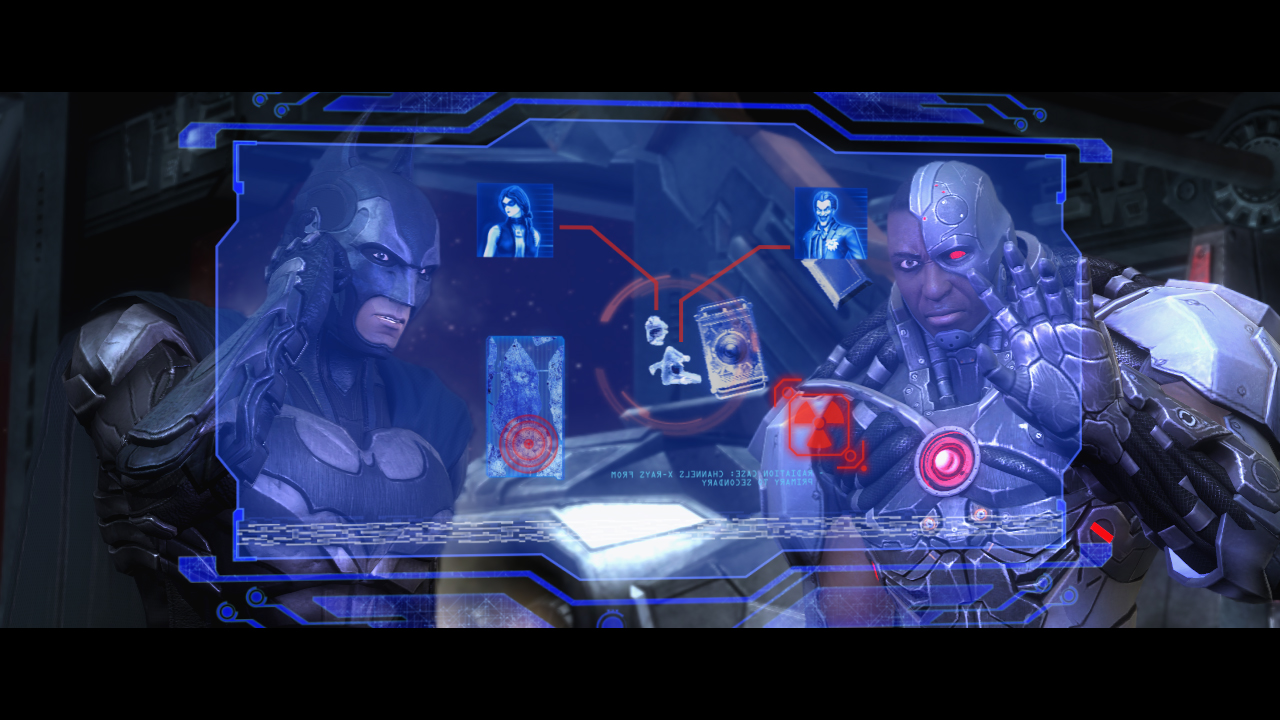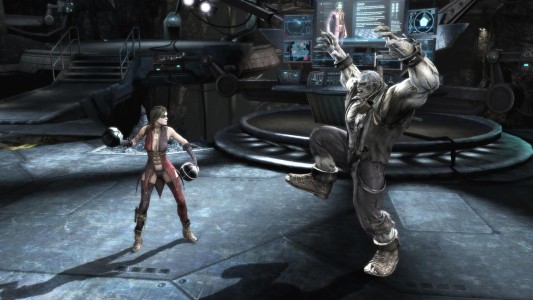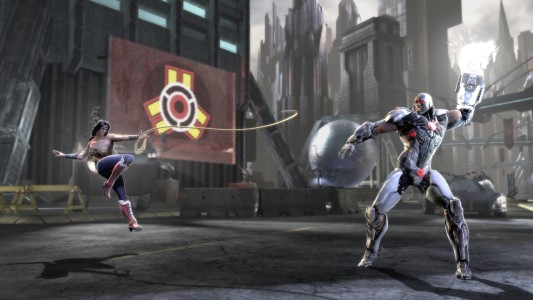Gaming is a cherished pastime among young and old alike. Even people who are not gamers can easily get sucked into winning matches and completing levels. Disabled gamers are just a small portion of this massive culture. Games that are accessible and inclusive for us are hard to come by, especially on consoles, and there are only a handful of games that happen to be accessible or have accessibility modes built into them.
One of these rare examples is a fighting game called Injustice: Gods Among Us. It is the first in a new fighting game franchise that introduces an original story featuring a large cast of DC Comics icons such as Batman, Harley Quinn, Solomon Grundy, Superman, The Flash, Wonder Woman and a variety of others. Set in a world where the lines between good and evil can often be blurred, players experience heroes and villains engaging in epic battles on a vast scale
For blind players, the game features a unique accessibility mode. I had a chance to sit down and interview Carlos Vasquez, a blind player who helped NetherRealm Studios create a mode that many blind and visually impaired players would enjoy, even on consoles. This is what he had to say.
Can you tell my readers a bit about who you are, and give us a history about your gaming?
Absolutely. My name is Carlos Vasquez, AKA Rattlehead in the fighting game community. I’ve been gaming since I was younger before and after I started losing my sight. I’m primarily a fighting game player since I became a hardcore fan of Mortal Kombat back in the arcade days. Recently I started to compete as much as time allowed, and began to be as active as possible in the fighting game scene. I have a YouTube channel where I upload gameplay videos I capture while battling online. The two main games I currently play are Mortal Kombat 2011 and Injustice: Gods Among Us. I attend local tournaments whenever my schedule allows. I enjoy studying the mechanics of the fighting engines of the games that I play, rather than just doing the extra material that is included in the games.
Many blind gamers say that fighting games are accessible, while some say that games like GTA IV are accessible because they have a few accessibility solutions built into the mechanic. What, in your opinion, makes a game “accessible” rather than having a few accessibility features?
A game is accessible if both disabled players and everyone else can enjoy the games the same way. This includes the ability to pop in the disc into a console and being able to jump into it without requiring any assistance to the gamer. Adding features such as sound cues and talking menus are just scratching the surface when making games accessible for blind players. A perfect example of having accessible features and enjoying the same core mechanics of a game is Skullgirls for Steam. Players who are visually impaired are able to read in game text using their screen readers. As a result casual players can complete tasks such as tutorial mode and other game features that require you to read instructions. In conclusion, accessibility does not mean toning down the games, but rather, it simply allows for blind players to enjoy the game the same as their sighted counterparts with a few additional options.
Can you tell our readers how you got in on the development of an accessibility mode in Injustice?
Due to my involvement in the Fighting Game Community(FGC), I had the privilege to come in contact with someone who is a former game developer and is very active in the community. James Fink, aka jamessmk, simply reaches out to people who want to be a part of the scene and gives them a voice. As a result, he contacted the developers of NetherRealm Studios and set the ball rolling for what would become a start to an accessibility feature for Injustice. He basically informed them that there would be a visually impaired player attending Evolution 2013 to compete in Mortal Kombat and Injustice. Once at the tournament, I was approached by former NRS member Hector Sanches who began to tell me about how he was impressed with my performance at the tournament despite being eliminated on stream. That led him to inform me that James spoke to him about a concern I had regarding interactive objects in Injustice. Of course, I wasn’t promised anything, but he assured me that they would look into it and would do something if possible. Once a new patch for the game came out, the general patch notes described a new feature that would allow identifying interactive objects through sound cues.
Can you tell our readers what this accessibility mode does?
This mode was added because of my concern in a tournament setting. Since sighted players had the advantage of being able to see whenever they were near interactive objects, I felt that it was unfair for me not to be able to do the same during matches. As a result, the accessibility mode is simply a sound cue that allows you to identify nearby objects as the characters move around the arena. To differentiate player 1 from player 2, the sound cue switches pitch depending who is near an interactive. A low pitch indicates player 1 while a higher pitch indicates player 2. And if both players are near it, both cues are heard simultaneously.
What advice would you give to developers regarding game design, as someone with a disability?
Maybe not some advice, but more a suggestion, as I’m not an expert in making games. However, developers should definitely consider including people with disabilities when figuring out the overall demographic of fans of the franchises they work on. They could reach out to these players and figure out what is it that they want in the games to make them playable for them. It’s becoming more and more obvious, with the aid of social media, that there are as many disabled players as there are players of various backgrounds. Design wise, I’d certainly would say that developers should continue to develop their sound design as much as the graphics. With today’s standards, graphics have evolved while sound design has slowly crept behind.
It can not be denied that sound design has evolved significantly over the past several years. But it should not be a big issue to implement sound cues that would allow blind players to follow what is going on in the screen. One major feature that is now almost commonly present is subtitles in order to allow deaf or hard of hearing players to follow the dialog on the games. With talking menus, for instance, they could simply have someone in the sound studio record extra voice clips reading text on the screen or reading each option as you browse the games menu options. Although we emphasize on the games level of accessibility for disabled gamers, consoles are another issue that would be a step in the right direction. If consoles could implement some type of screen reading software like found in computers, it would be a major breakthrough in the innovation of gaming in general for people with visual impairments. Nevertheless, it’s great to see organizations such as Able Gamers that have been advocating for gamers with all types of disabilities.



